Study to find out how sea level rise can impact 8 Singapore offshore islands
Sign up now: Get ST's newsletters delivered to your inbox
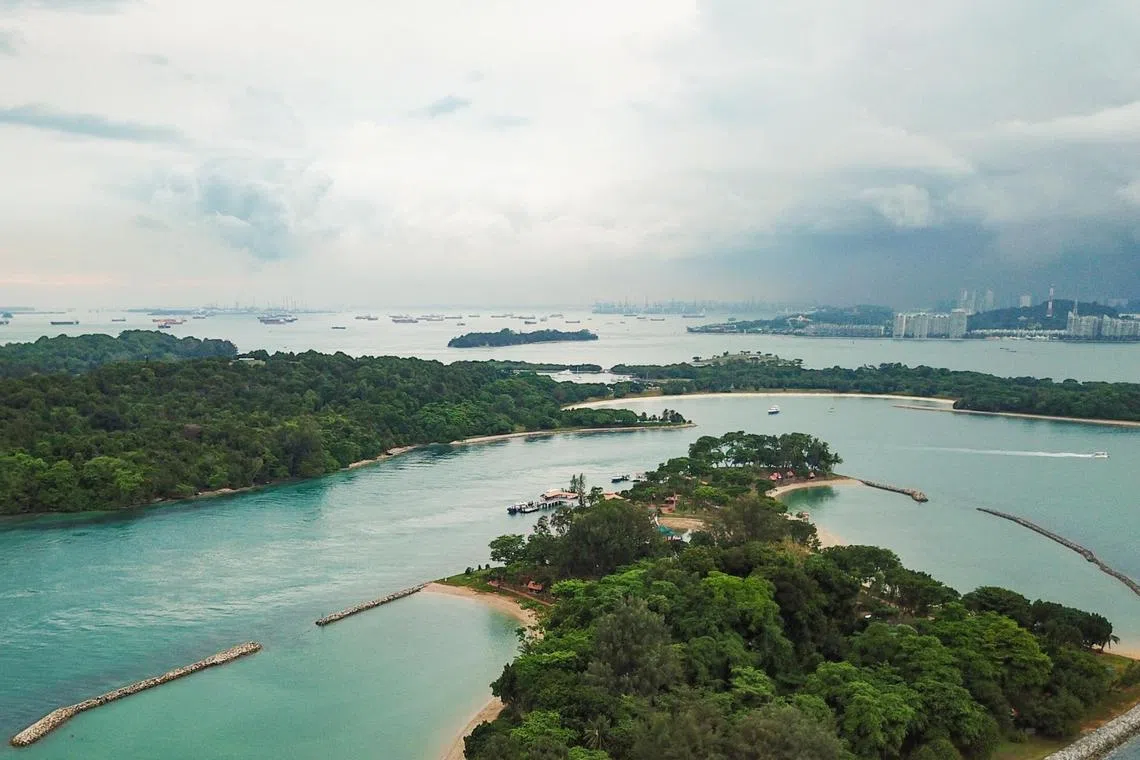
The islands have specific purposes such as military use, marine research and conservation, recreation and petrochemical works.
ST PHOTO: LIM YAOHUI
Follow topic:
SINGAPORE – The authorities in Singapore will be carrying out a study to find out how rising seas could impact eight of the country’s offshore islands, and suggest ways to protect them.
The islands are Pulau Tekong, Kusu Island, Sisters’ Islands, Pulau Bukom, Pulau Hantu, Pulau Pawai, Pulau Senang and the Southern Islands (comprising St John’s Island and Lazarus Island, which are linked by a causeway).
On June 27, national water agency PUB launched a tender for this two-year study, which is expected to begin by 2026.
The study will gather data through field surveys, assess flood risks and recommend flood protection standards.
It will explore possible measures to protect the islands and indicate timelines to develop the solutions and put them in place, said PUB in a statement.
All the islands have specific purposes such as military use, marine research, heritage, recreation and petrochemical works. While Pulau Tekong is located north-east of the mainland, the others lie south in the Singapore Strait.
A quick getaway for leisure seekers, many of the islands in the southern waters are also biodiversity havens, home to most of the country’s remaining intact coral reefs.
Pulau Senang and Pulau Pawai serve as military live-firing areas.
“The offshore islands are rich in biodiversity and may have very different terrain profiles compared to mainland Singapore,” added PUB, noting that solutions have to be tailored to accommodate their unique characteristics.
Experts said the elevation of the islands is similar to Singapore’s, and parts of their coastal areas and reclaimed portions are generally low-lying.
Singapore’s average sea level is projected to rise by up to 1.15m by 2100,
Mr Matthijs Bos, who assesses flood risk for global engineering consultancy Haskoning, noted that the offshore islands will mostly be exposed to extreme storm surges that can cause coastal flooding when seawater flows over land. Impacts can be worsened if intense rain happens at the same time, affecting assets on the islands and land use.
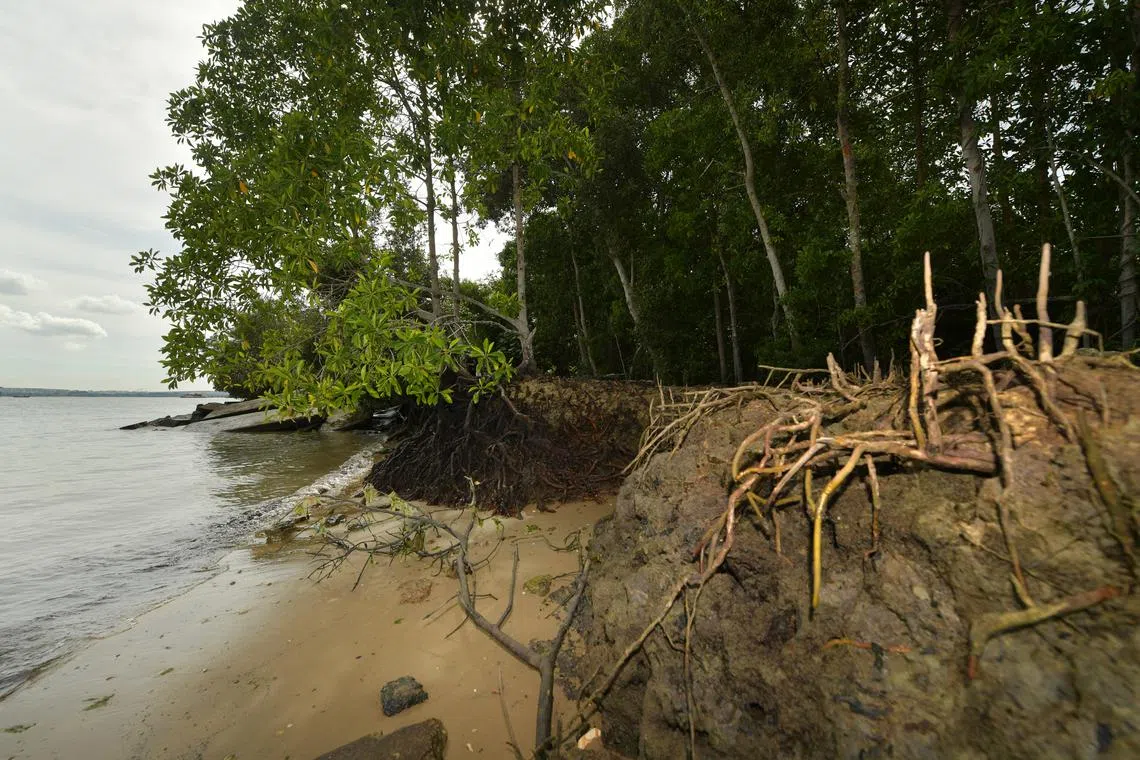
Mangroves on Pulau Ubin. Sea-level rise can drown shallow habitats like coral reefs, mangrove forests and seagrass meadows.
ST PHOTO: ALPHONSUS CHERN
Sea-level rise can drown shallow habitats like coral reefs, mangrove forests and seagrass meadows, said marine biologist Huang Danwei, deputy head of the NUS Lee Kong Chian Natural History Museum.
“Mangroves, seagrasses and their associated flora and fauna may not be able to tolerate the increasing depths as seawater submerges the intertidal zones deeper and for longer durations,” he added.
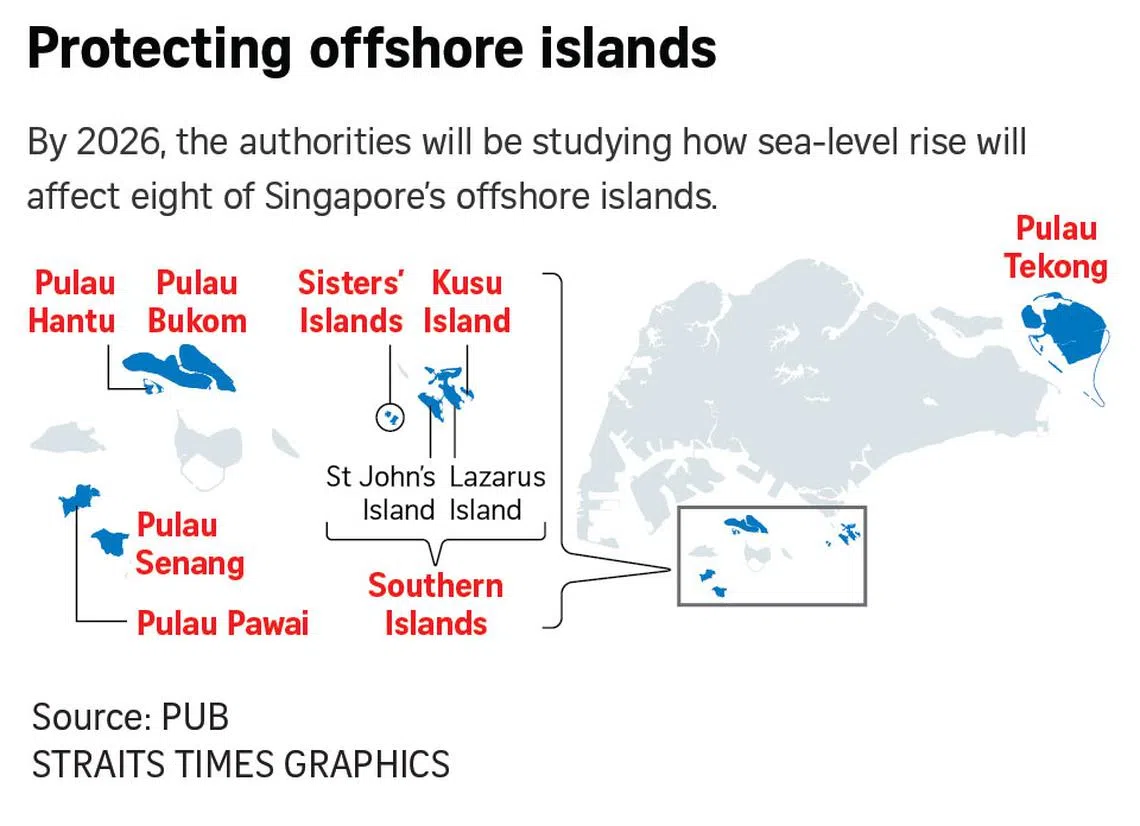
Storm surges can scour the seabed and suspend more sediments, which will affect deeper corals.
The rustic offshore islands will need a mix of hard engineering solutions while harnessing nature’s existing defences. For example, a seawall could be set up behind a beach or mangrove patch, said Mr Bos.
Associate Professor Huang said: “Nature-based solutions that allow coastal habitats to shift and migrate landward work best. As the sea covers more of the coastal areas, urbanised areas that are lined with seawalls or infrastructure can impede the ability of existing wetlands to migrate landward.”
Pulau Tekong already has coastal protection in the works: A polder – including a low-lying tract of land – is being created north of the island. This reclaimed land will have higher barriers called dikes around it, to protect parts of the island from rising seas.
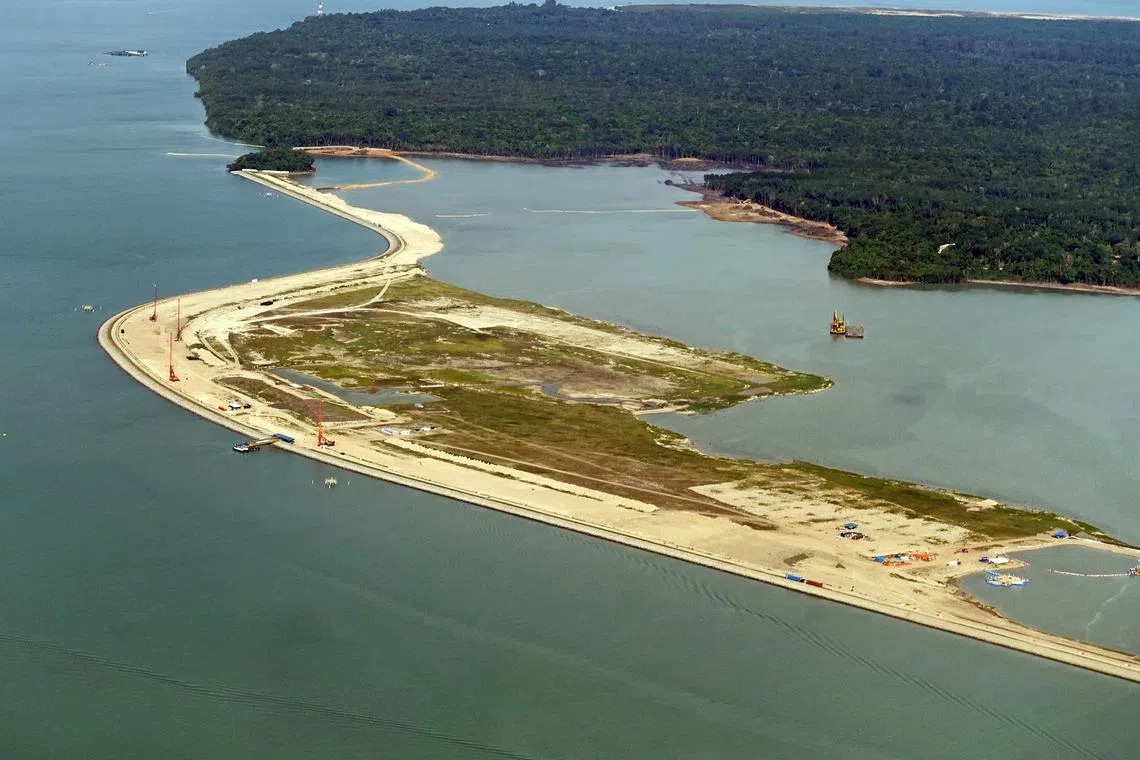
An aerial view of a polder site in Pulau Tekong.
PHOTO: HOUSING & DEVELOPMENT BOARD
The study of Singapore’s coastline is at an advanced stage. It has been divided into eight sections for a deeper look into the most suitable coastal protection solutions for each stretch.
Four of these site-specific studies are ongoing – the City-East Coast stretch, Jurong Island, and two sections in the north-west of the country.
The 2026 study will serve as a foundation for future site-specific studies on the eight islands, said PUB.
Singapore has 63 offshore islands and islets.
Pulau Semakau in the southern waters – home to the nation’s only landfill – will be separately assessed by the National Environment Agency (NEA), said PUB.
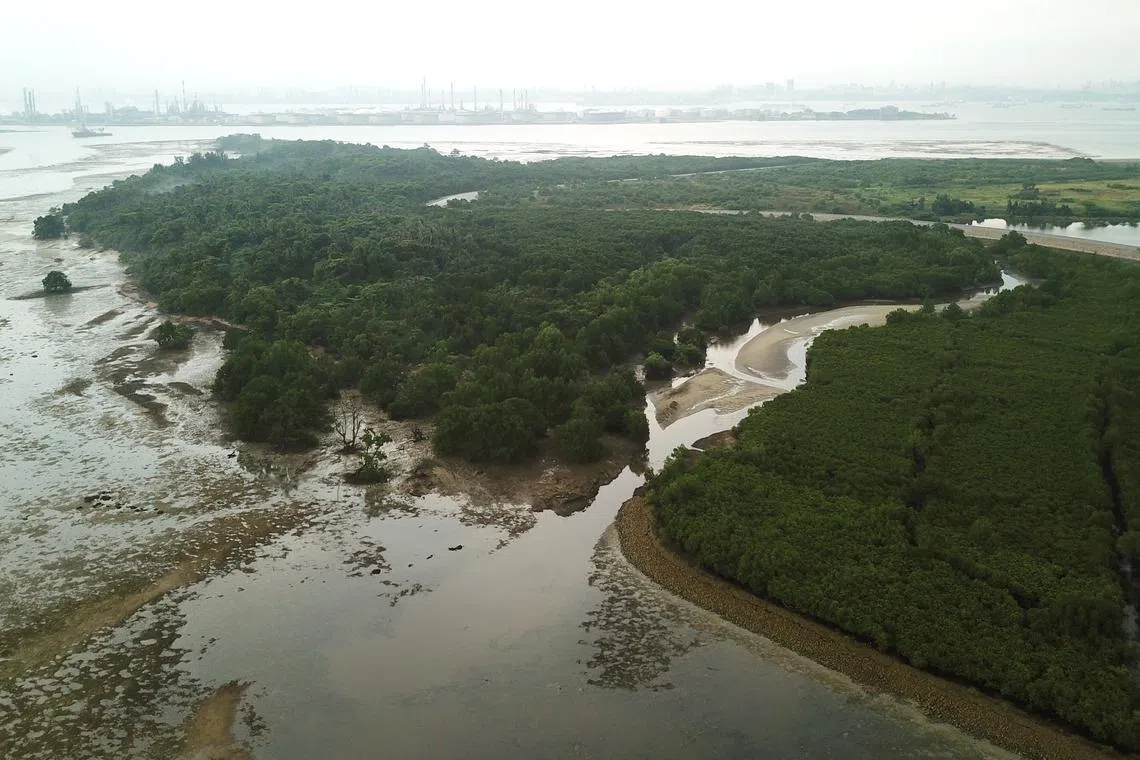
Aerial shot of Pulau Semakau.
PHOTO: ST FILE
In April, the NEA launched a tender for a consultant to conduct a study on bund improvement and development options for Semakau Landfill to sustain operations, documents on government procurement portal GeBiz showed.
A 7km perimeter rock bund encloses part of the sea off Pulau Semakau to create space for the landfill and prevent ash from spilling to the sea.
The heritage-rich Pulau Ubin and its neighbouring Pulau Ketam will not be part of the islands study. Instead, they will be included in the upcoming site-specific study of the north-east coast, which will include Punggol and Pasir Ris.
Ms Hazel Khoo, director of PUB’s coastal protection department, said: “Rising sea levels will pose risks to Singapore’s offshore islands. Some are home to rich biodiversity and heritage, and are spaces enjoyed by many, while others serve industrial and defence purposes.
“We aim to better understand the vulnerabilities of each island.”


